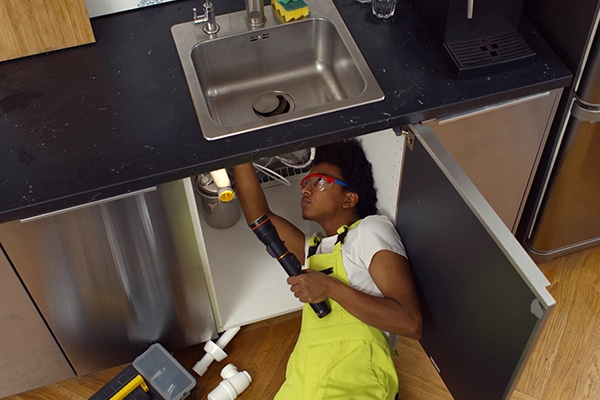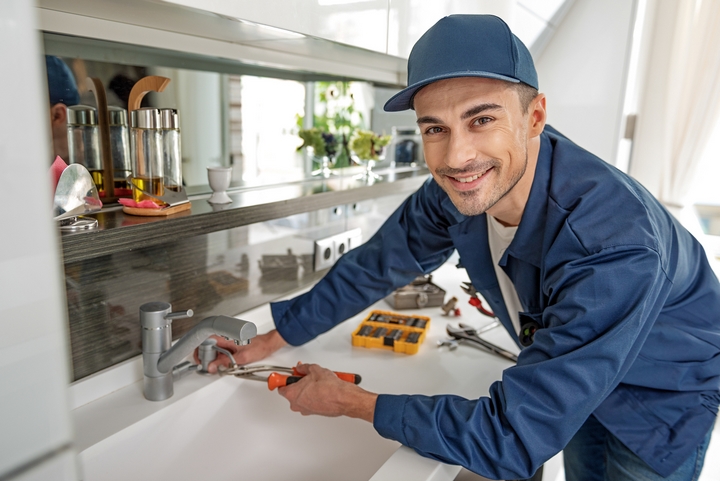What're your ideas with regards to Innovative Plumbing Trends Transforming Construction?

Intro
The plumbing market is undergoing a transformative stage driven by technical developments and growing worries for sustainability and effectiveness. This write-up discovers emerging patterns and innovations shaping the future of plumbing.
Regulative Landscape
Regulative frameworks play an essential function fit the fostering of pipes developments, with criteria and codes controling whatever from water effectiveness to item security. As modern technologies continue to progress, regulatory bodies should adapt to make certain consumer security and environmental stewardship.
Future Expectation
The future of pipes is characterized by continued technology and assimilation with various other markets such as IoT, renewable energy, and structure automation. By welcoming lasting methods, leveraging emerging innovations, and prioritizing user-centric style, the plumbing sector is poised to address the advancing requirements of culture while reducing its environmental footprint.
Increased Reality in Plumbing
Enhanced Truth (AR) modern technology is reinventing pipes by giving service technicians with real-time aesthetic guidance for repairing and repair jobs. AR-enabled wise glasses or mobile applications overlay electronic info onto the physical atmosphere, aiding plumbers visualize pipeline layouts, determine hidden leaks, and execute repair services with precision.
Effect of 3D Printing
The advent of 3D printing has introduced brand-new opportunities in manufacturing plumbing elements. From custom-designed components to intricate pipe fittings, 3D printing allows for rapid prototyping and on-demand manufacturing, decreasing lead times and enabling better personalization in pipes design.
Health and Safety Characteristics
In feedback to heightened problems for health and wellness, plumbing components are incorporating features such as antimicrobial surfaces, touchless operation, and self-cleaning devices. These technologies not only improve health yet likewise promote user convenience and comfort.
Hygiene-focused Fixtures
Touchless taps, self-sanitizing commodes, and antimicrobial surface areas are becoming significantly prevalent in household and business setups, reducing the threat of bacterium transmission and advertising a cleaner, much healthier setting.
Water Top Quality Monitoring
Improvements in water high quality monitoring modern technologies enable property owners to monitor the purity and safety and security of their water system in real-time. Smart water top quality sensing units can identify contaminants, pH levels, and temperature variations, equipping customers to take positive actions to make sure water safety.
Remote Pipes Providers
Remote diagnostics and digital support are reinventing the method pipes solutions are supplied. Through video conferencing and remote accessibility innovations, plumbing technicians can troubleshoot problems, offer advice for do it yourself repair services, and even do remote inspections, using better accessibility and convenience to house owners.
Challenges and Opportunities
While plumbing advancements hold immense assurance, they also present obstacles such as data privacy problems, governing compliance, and the demand for labor force training. Resolving these challenges calls for collaboration between industry stakeholders and regulative bodies to guarantee secure and liable execution of brand-new modern technologies.
Smart Plumbing Equipments
Including smart innovation right into plumbing systems enables remote tracking, leakage discovery, and automated upkeep. Smart sensing units and IoT (Internet of Points) gadgets allow home owners and plumbing technicians to check water usage and find problems in real-time, resulting in much more reliable resource administration and proactive upkeep.
Water Efficiency Solutions
With boosting focus on water preservation, innovative options are being created to reduce water wastage in plumbing systems. High-efficiency components, greywater recycling systems, and smart watering controllers are amongst the innovations assisting customers minimize their water footprint while keeping comfort and comfort.
Lasting Materials
The change in the direction of sustainability extends to plumbing materials, with an expanding preference for eco-friendly choices. Biodegradable piping products, such as PEX (cross-linked polyethylene) and HDPE (high-density polyethylene), offer durability and resistance to deterioration without jeopardizing environmental stability.
Predictive Maintenance
Anticipating maintenance strategies take advantage of information analytics and machine learning formulas to prepare for and avoid pipes concerns prior to they occur. By assessing historic information and efficiency metrics, predictive maintenance formulas can recognize patterns and abnormalities, making it possible for aggressive treatments to prevent expensive fixings and disruptions.
Conclusion
In conclusion, the future of plumbing is specified by a convergence of modern technology, sustainability, and user-centric style. By embracing smart solutions, sustainable products, and positive upkeep practices, the plumbing sector can enhance performance, advertise security, and add to a more sustainable future.
The Future of Plumbing: Trends and Innovations to Watch
Introduction to Future Plumbing Trends
The future of plumbing is being shaped by several key factors, including technological advancements, environmental concerns, and changing consumer expectations. These factors are driving the development of new products, services, and practices that enhance the efficiency, sustainability, and convenience of plumbing systems.
Key Trends and Innovations in Plumbing
Smart Plumbing Systems: The integration of smart technology into plumbing systems is transforming the way we manage water usage and detect issues. Smart leak detectors, automated water shut-off valves, and smart faucets are just a few examples of how technology is enhancing plumbing systems. These devices provide real-time data and remote control capabilities, allowing homeowners to monitor and manage their water usage more effectively. Water Conservation and Efficiency: With increasing concerns about water scarcity, there is a growing emphasis on water conservation and efficiency. Innovations such as low-flow fixtures, greywater recycling systems, and rainwater harvesting are becoming more popular. Plumbers are adopting these technologies to help customers reduce their water consumption and save on utility bills. Sustainable Materials: The use of sustainable materials in plumbing systems is gaining traction. This includes the adoption of recyclable and biodegradable materials, as well as the use of non-toxic and eco-friendly products. Sustainable materials help reduce the environmental impact of plumbing systems and promote long-term sustainability. Energy-Efficient Water Heaters: Advances in water heating technology are leading to the development of more energy-efficient systems. Tankless water heaters, solar water heaters, and heat pump water heaters are becoming more prevalent. These systems offer significant energy savings and reduce the carbon footprint of homes and businesses. Trenchless Technology: Trenchless technology is revolutionizing the way plumbing repairs and installations are conducted. This method allows for the repair or replacement of pipes without extensive excavation, minimizing disruption and reducing costs. Techniques such as pipe bursting and cured-in-place pipe (CIPP) lining are gaining popularity. Health and Safety: The focus on health and safety is driving innovations in plumbing systems. Touchless faucets and fixtures, antimicrobial materials, and improved water filtration systems are being developed to enhance hygiene and protect public health. Plumbers are adopting these innovations to meet the growing demand for safer and healthier plumbing solutions. Remote Diagnostics and Monitoring: The ability to diagnose and monitor plumbing systems remotely is becoming increasingly important. Remote diagnostic tools and sensors allow plumbers to identify issues and perform maintenance without the need for on-site visits. This enhances efficiency and reduces the need for costly emergency repairs. Impact of Future Trends on the Plumbing Industry
Enhanced Efficiency: The adoption of smart technology and energy-efficient systems will enhance the efficiency of plumbing systems. This will lead to reduced water and energy consumption, lower utility bills, and improved performance. Sustainability: The focus on sustainability will drive the development and adoption of eco-friendly plumbing solutions. This will contribute to the conservation of natural resources, reduction of waste, and protection of the environment. Improved Customer Experience: The integration of technology and innovative solutions will improve the customer experience. Homeowners will have greater control over their plumbing systems, access to real-time data, and the ability to manage their water usage more effectively. Increased Demand for Skilled Plumbers: The adoption of new technologies and materials will require plumbers to acquire new skills and expertise. There will be an increased demand for skilled plumbers who are knowledgeable about the latest trends and innovations. Cost Savings: The use of efficient and sustainable plumbing solutions will result in cost savings for both homeowners and businesses. Reduced water and energy consumption, lower maintenance costs, and fewer emergency repairs will contribute to overall affordability. Preparing for the Future of Plumbing
Stay Informed: Keep up-to-date with the latest trends and innovations in the plumbing industry. Attend industry conferences, participate in training programs, and engage with manufacturers to stay informed. Invest in Training: Ensure that you and your team are trained in the latest technologies and installation techniques. This will enable you to offer cutting-edge solutions to your customers and stay competitive in the market. Promote Sustainable Solutions: Highlight the benefits of eco-friendly and energy-efficient plumbing solutions to your customers. Educate them about the advantages of adopting sustainable practices and products. Leverage Technology: Embrace smart technology and remote diagnostic tools to enhance your services. Offer remote monitoring and maintenance options to provide added convenience and value to your customers. Collaborate with Manufacturers: Partner with manufacturers of innovative plumbing products to gain access to the latest solutions and technical support. This can also provide opportunities for joint marketing efforts. Focus on Customer Education: Educate your customers about the benefits and functionality of new plumbing technologies. Provide guidance on how to use smart systems and maintain sustainable plumbing solutions. Conclusion
The future of plumbing is being shaped by exciting trends and innovations that promise to enhance efficiency, sustainability, and convenience. By staying informed and embracing these changes, plumbers can provide superior services to their customers and contribute to a more sustainable future. The adoption of smart technology, sustainable materials, and energy-efficient systems will drive the evolution of the plumbing industry, creating new opportunities and challenges. By preparing for the future, plumbers can ensure their success in a rapidly changing market.

I came across that piece about when browsing the search engines. Feel free to take a moment to share this blog post if you enjoyed reading it. I recognize the value of your readership.
Book Appointment Now